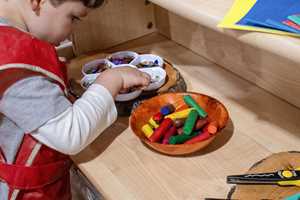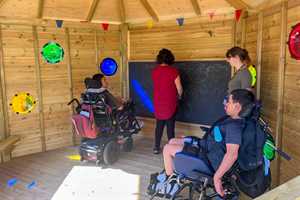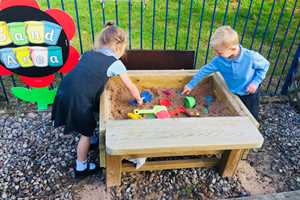
Special Educational Needs
How To Stir The 7 Senses In Your School Playground
Creating sensory play opportunities for children to explore their 7 senses is a huge part of what we do here at Pentagon Play.
We all go through life engaging and interacting with the world, everything and everyone around us, in some way or another, through our senses.
So it’s really important that children are able to go out into their playground, their safe space for discovery, to explore everything that their senses have to offer.
Why Do children Need To Practice Using Their Senses?
As with so many things, although responding to our senses is natural human behaviour, it doesn’t always just happen that easily. With opportunities to explore, we can develop and get better at what we do. Sensory play is vital because it:
- Builds nerve connections within the brain’s neural pathways, enhancing memory function. Children’s brains are always developing and these connections will create the ability and the desire to complete more complex learning tasks.
- Boosts so many important life skills such language acquisition and development, social engagement and interaction, motor development, cognitive growth and the ability to recognise and solve problems.
- Helps children learn to recognise and respond appropriately to sensory input, such as hot and cold surfaces and surroundings, wet and dry substances, noises, sticky situations, potentially harmful situations and so on.
- Used appropriately, sensory play can also be a great way of calming a frustrated or anxious child, helping a child to self-regulate, to engage and to concentrate.
What About Children With Sensory Processing Disorder And Sensorimotor Problems?
Sensorimotor skills are all about the process of receiving sensory messages from our environment (sensory input), through our 7 senses, and then producing an appropriate response (motor output). Sensory input needs to be organized and processed to allow us to produce the right motor response to something.
If a child has sensorimotor difficulties or a Sensory Processing Disorder, it means that they have trouble receiving and responding appropriately to information that comes in, or should come in, to their brain through the senses.
Sensorimotor difficulties often go hand in hand with other conditions, particularly ADHD, ASD, Dyslexia, Dysgraphia, Down’s Syndrome and Cerebral Palsy. Children with sensorimotor difficulties may show any number of symptoms, including:
- Poor body awareness
- Problems with their gait, such as walking on their toes
- Regularly avoiding tactile experiences
- Self-stimulating behaviours, such as flapping or rubbing their hands, rocking, chewing on clothing - all behaviours that provide them with additional sensory feedback
- Delays in speech and language development
- Difficulties with hand-eye coordination or general physical coordination
- Being overly anxious or emotional
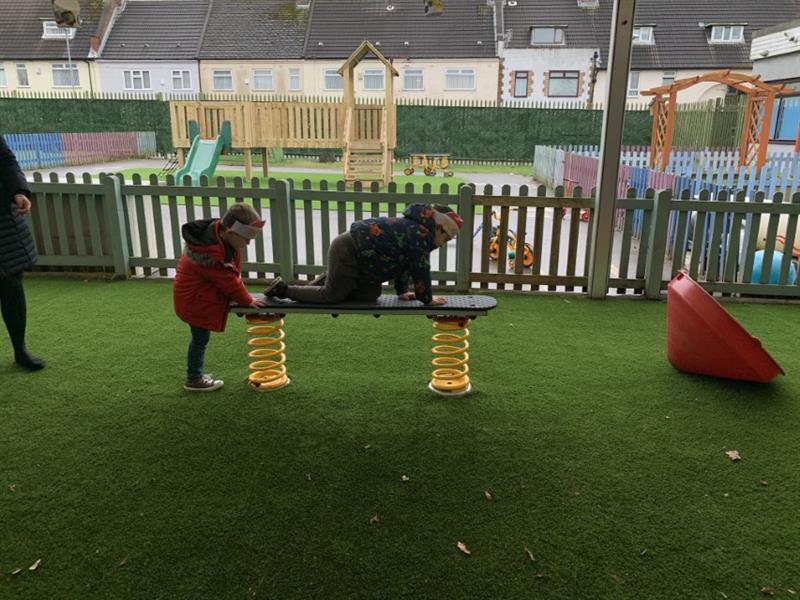
Occupational and Physiotherapy can help, usually involving activities that are designed to normalise sensorimotor planning, by improving the way the nervous system registers and interprets sensory information. A physiotherapist can recommend appropriate toys, games, and strength and endurance exercises suitable for an individual child.
Day to day, there is so much that schools and nurseries can do to help and encourage all children to explore with and develop their senses in the playground - to practice making those neural connections, and to reinforce exercises and support that a child with sensorimotor difficulties might already be receiving.
What are the 7 senses, and what activities can be enjoyed in the outdoor playground to help children to develop them?
Let’s take a closer look at the 7 different senses - touch, sight, hearing, taste and smell, movement (the vestibular system) and body awareness (proprioception) - and how you can use the outdoor playground at your school to allow children to explore them all and enhance their learning experiences.

Product Spotlight
1. Touch
Being aware of touch through receptors in the skin is known as the body’s tactile system. It has two dimensions to it – the first is discrimination, telling us the whereabouts of the touch on our body - and the second is to tell us whether the touch is safe or dangerous, and how we should respond. If a child struggles to process the touch sensation, their brain misinterprets the information.
This can lead to them incorrectly labelling some sensations as dangerous, e.g. they might overreact to a light touch.
For many children with sensory processing disorders, deep pressure touch can be really calming to the sensory system. Weighted blankets and massage can be great calming and relaxation techniques.
The outdoor playground is the ideal place for children to explore many different textures and sensations - it’s teeming with so many different surfaces and naturally occurring variations in textures (trees, soil, grass, bricks, puddles - any physical object really!) for children to touch.
And because it’s outdoors it’s very easy to offer messy and sensory play activities without having to worry about the clear-up and the limited space available in the classroom!
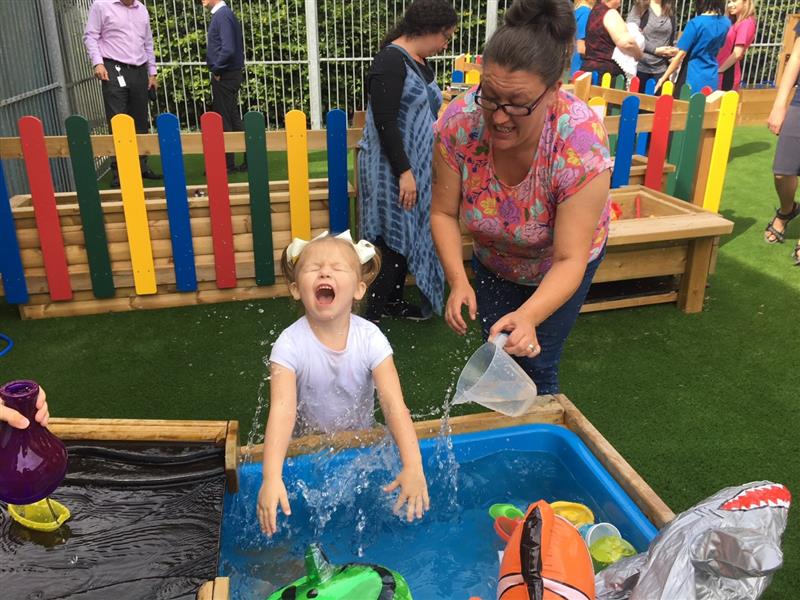
What’s most important is to provide plenty of variety. Mud, Sand And Water Play are super sensory activities and an integral part of any good EYFS/KS1 playground.
Using mud and sand, wet or dry, causes it to change its texture. You can use all sorts of different objects - sieves, rakes, scoops, containers, watering cans etc - to explore the way they feel, move and behave.
Water is extremely versatile, whether children are just dipping their fingers in at different temperatures, or channelling its flow and causing a splash with all sorts of wet-play experiments - it’s one of the best readily available resources for tactile play.
Including water play is important during any child's development can provide a wide variety of benefits and skills for them.
Try sprucing-up your playground/school building wall to create a tactile sensory walkway for children to explore.
It’s a brilliant use of an otherwise-dead space. Our range of Sensory Panels are a great way to start - they can be secured to the wall, and provide all sorts of interesting surfaces for children to touch and work out their reactions.
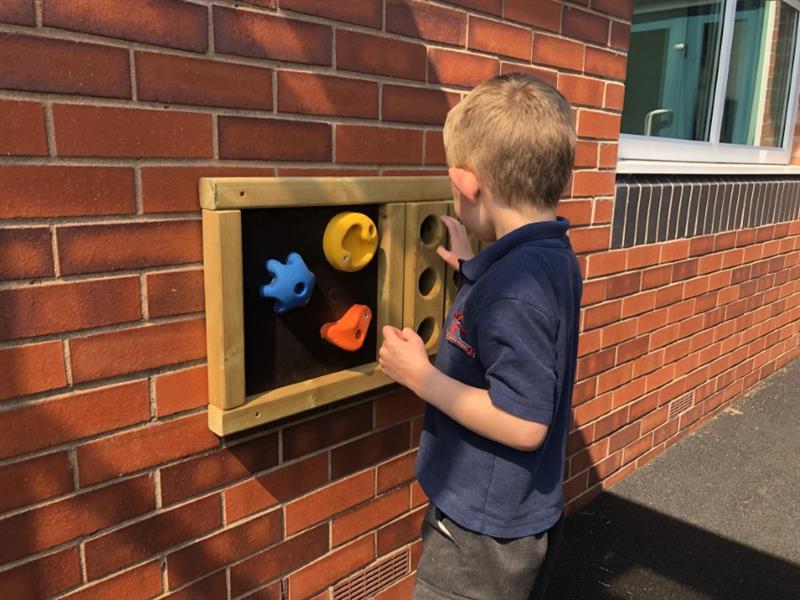
2. Sight
Vision, our interpretation of what we see, is what helps us to recognise objects, and guides our responses, movements and actions. Children who have difficulty with visual processing may not be able to filter out unnecessary details, or may struggle to identify important visual information.
When we design playgrounds, visual appeal is a huge part of it (it’s what entices and encourages children to play and explore after all). However there is much more to it than that.
It’s really important to plan a playground carefully with a child’s visual system in mind. We think about their lines of vision, for example - so that there are different sights at different heights to suit different age groups.
Some schools prefer equipment made with more natural materials, earthy browns and calming greens, while others are looking for bold and bright colours to excite their pupils and help teach colour and shape recognition.

Colour contrast in an outdoor learning environment is particularly important for children who have visual impairments. Our colourful range of Playground Surfacing and Playground Markings can be used as fun resources to educate and support physical activity, as well as boundary markings to designate between zones or to alert children to a change in environment.
Take a look at our fantastic interactive Sensory Spinners, created specifically for children who seek out visual, auditory and tactile stimulation.
Tracking moving objects and being able to predict and follow the trajectory of objects is another important part of the visual system. Ball games and target activities are always a good way to practice this skill.
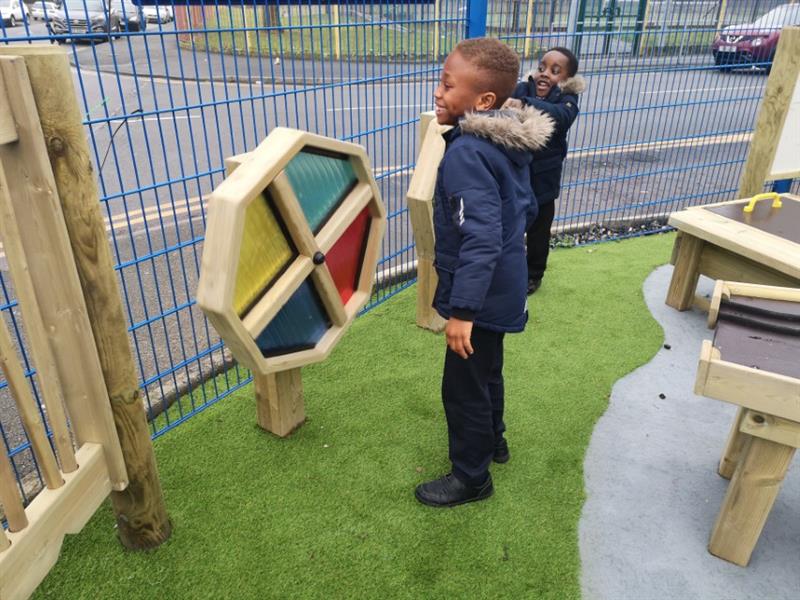
3. Hearing
Our auditory system identifies the direction, type and quality of sound, and what that sound means to us. Auditory processing problems can prevent a child from properly identifying sound or blocking out background noise.
Some children may be sensitive to loud noises, while others might be easily distracted by softer noises. These children can often find it hard to concentrate in busy environments, and may need to have instructions repeated frequently.
Our products team have created a wonderfully innovative, all-encompassing Sensory Tunnel which is a sight to behold in any playground. Designed to be fully inclusive for children of all ages and abilities, it leads them on an 8m sensory journey providing stimulation for all the 7 senses.
Sound within the tunnel walls is different to sound in the rest of the playground, with the weather having different influences to create different auditory experiences for children. Musical panels within the tunnel offer open-ended opportunities to try and test different sounds at different volumes.
We have an outstanding new range of Outdoor Musical Equipment for schools which we’re really excited to introduce - absolutely brilliant for experimenting with sound and sound recognition, and helping to fine-tune children’s auditory systems, amongst all the other many benefits of music-making.
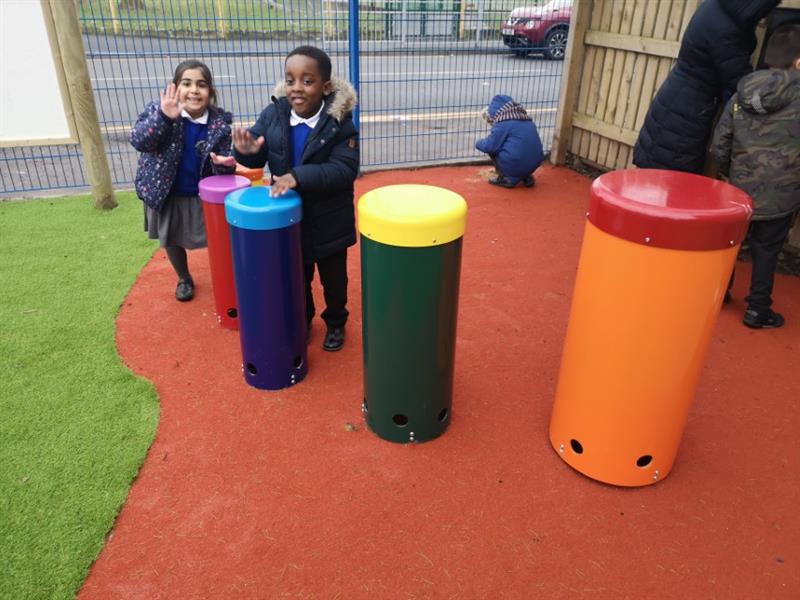
4. Taste and Smell
Our taste and smell senses are closely linked. The two together, for example, allow us to identify foods that we enjoy or dislike, and give us a good idea as to what is and isn’t safe to eat.
If either of these senses is not working properly, a child might identify some perfectly good foods as unpleasant or unsafe, and refuse to eat them.
Both senses are directly linked to our emotions too – we can use some smells (think lavender or the salty smell of the sea) to help us to feel calm - and taste can bring true pleasure - who doesn’t like a piece of chocolate?!
Creating a sensory garden or a wildlife area within your school grounds is not only good for the environment and scientific, explorative learning. It can provide a real feast for a child’s sense of smell and taste.
They love to plant, grow and care for beautiful, scented herbs and flowers, which is why we have created a whole range of accessible planter benches to brighten up the playground.
Use them for easy-to-grow fruits and vegetables such as strawberries, potatoes and salad leaves, to encourage children to explore their taste sense. Many of our specialist Sensory Play products and Outdoor Classrooms and Gazebos feature integrated planters so that you can easily term them into a fabulous feature for sensory exploration.
5. Proprioception and the Vestibular System
The vestibular system is a complex system based in the inner ear. It works with the auditory and visual system, influencing our balance and our sense of where our body is in space.
Equally complex, proprioception is our sense of self-movement, the position and movement of our body.
Our brains use the nervous system to keep track of and control different parts of the body, using feedback from joint and muscle movement. So it helps us to recognise the boundaries of our body – how far away we are from an object for example, or how much pressure we are exerting on a pencil.
Problems involving the vestibular system will mean that a child will have difficulty with balance and coordination, relying on what they can see visually for feedback about their body.
Children with proprioceptive needs have difficulty knowing where their body is in order to move it effectively. They tend to seek out activities that provide them with increased awareness, grasping objects very tightly, or jumping and crashing into things.
There are all sorts of exercises and activities that can help a child to develop their proprioceptive and vestibular senses - and far too many to go into great detail here! However, the biggest and best stand-out playground activity is also very often their favourite - climbing!
Allowing a child to climb helps them to exercise every part of their body - developing gross and fine motor skills and significantly helping them to gain the proprioceptive and vestibular input that they are seeking.
Whether going up and down steps and ramps, rolling down a hill, swinging off monkey bars or climbing to the top of a playframe - it’s all fantastic work for their senses and most importantly, it’s good fun too.
Our range of Playground Equipment For Children With Special Education Needs is designed to make sure that everyone can get outdoors and enjoy all its many benefits and opportunities for sensory exploration. For more information, or if you would like us to come and visit your school for a free, no-obligation playground consultation, please do Contact Us Here.



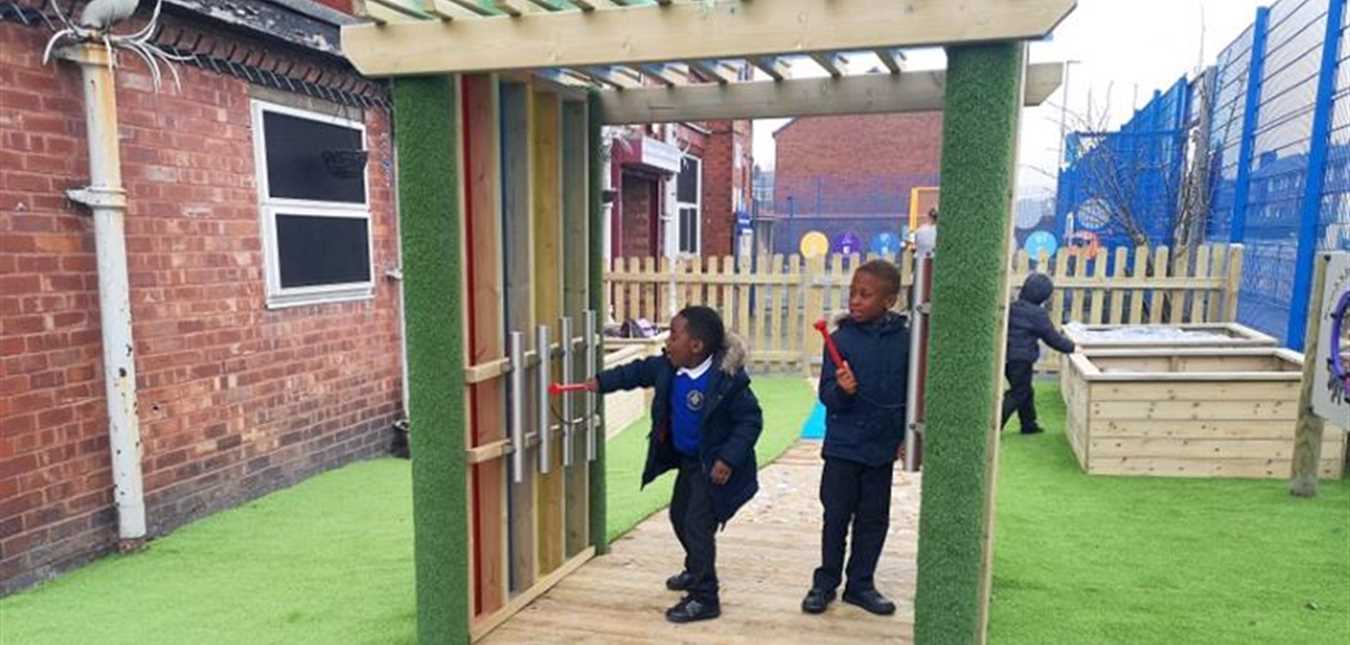
-3D-render.jpg)


